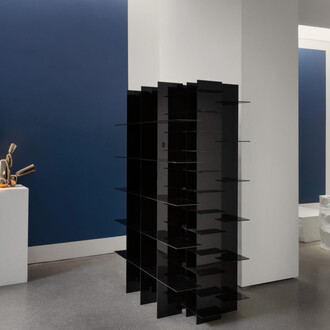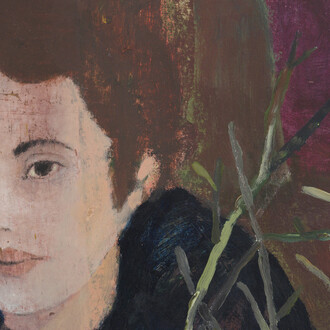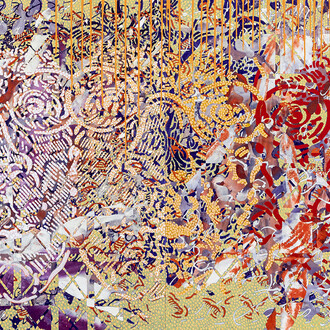Revered as the founding father of the American Art Furniture Movement, Wendell Castle’s (1932-2018) solo exhibition Cantilever showcases the artist’s mastery of materials and their properties, ranging from his gravity-defying structures of the 1960s to his later exploration of classical forms and experimentation with trompe l’oeil. Featuring works crafted in wood and metal, the show captures the dynamic later years of a pivotal figure in redefining the boundaries between art and design in the late 20th century, amidst periods of dynamic cultural change in the US.
In a career spanning six decades, Castle forged a unique discipline that seamlessly intertwined sculpture and industrial design, consistently challenging the boundaries of artistic creation. His craftsmanship and whimsical, organic approach to sculpture are evident in the minimalist, monochromatic sculptures that feature dramatic cantilevered shapes extending horizontally from seemingly central points of a structure, without load-bearing support, thus appearing to float or defy gravity. The prevalence of the cantilever illustrates artist’s mastery of weight, balance, volume and structural integrity.
Produced between 2011 and 2017, the exhibited works demonstrate how Castle remained at the forefront of contemporary art and design by embracing new technologies late into his career. Exemplifying Castle’s departure from the static nature often associated with modernism, this period was marked by fluid, organic forms that maximised the abstract volume of the works, using digital methods such as 3D modelling, scanning and laser cutting to produce functional yet sculptural works of collectible design.
Many are made using the artist’s own groundbreaking technique of stack lamination, which entails skillfully carving into stacked layers of laminated wood. The resulting creations vary in composition, from bulbous to sinewy and serpentine, yet consistently maintain a delicate balance.
They include Second coming (2013), a biomorphic sculpture featuring three conjoined seats supported by voluminous spires, which exemplifies the unconventional forms that Castle injected into the Art Furniture movement. The spires supporting a singular seat in Dark wish (2012) are not simply artistic augmentations to the chair – rather, they counterbalance the entire piece and allow for its dramatically elongated composition. Something to hide (2012) comprises twin wooden sculptures made of smaller spires growing on top of one another, marrying a whimsical aesthetic with a deep understanding of balance and composition.
Castle’s taste for innovation emerged during his study of sculpture and industrial design at the University of Kansas in the late 1950s. Utilising walnut sourced from a nearby factory, he laid the groundwork for his organic approach to design, inspired by contemporaries like Finn Juhl and Carlo Mollino. Castle’s investigation into different shapes is not only a testament to his technical prowess but also imbues his pieces with a playful and imaginative quality, therein challenging traditional furniture-making norms and establishing the artist as a visionary in the field.
















